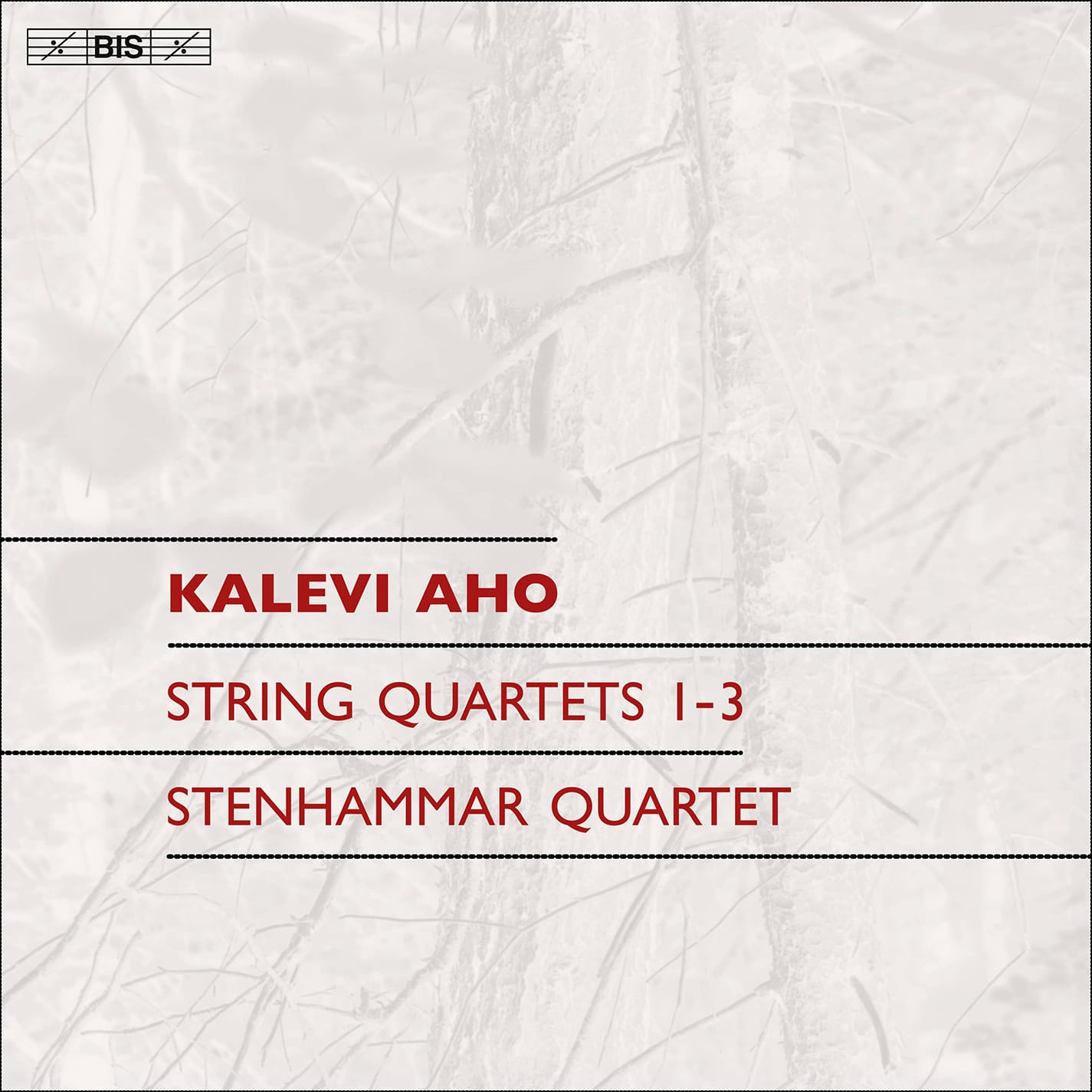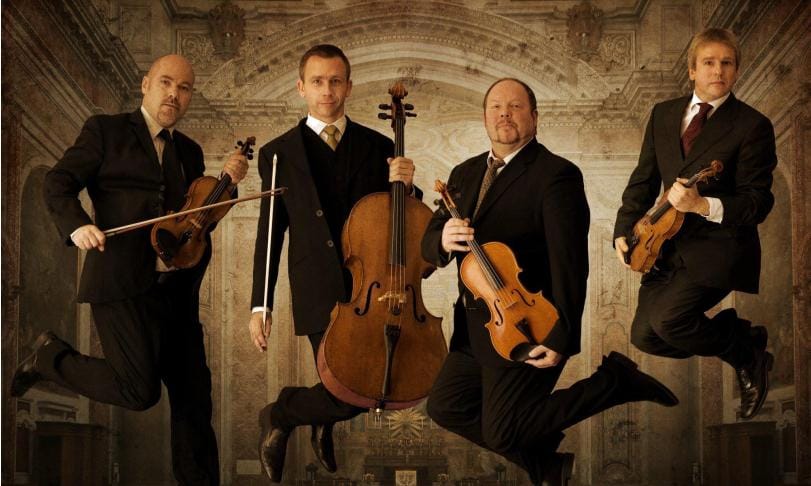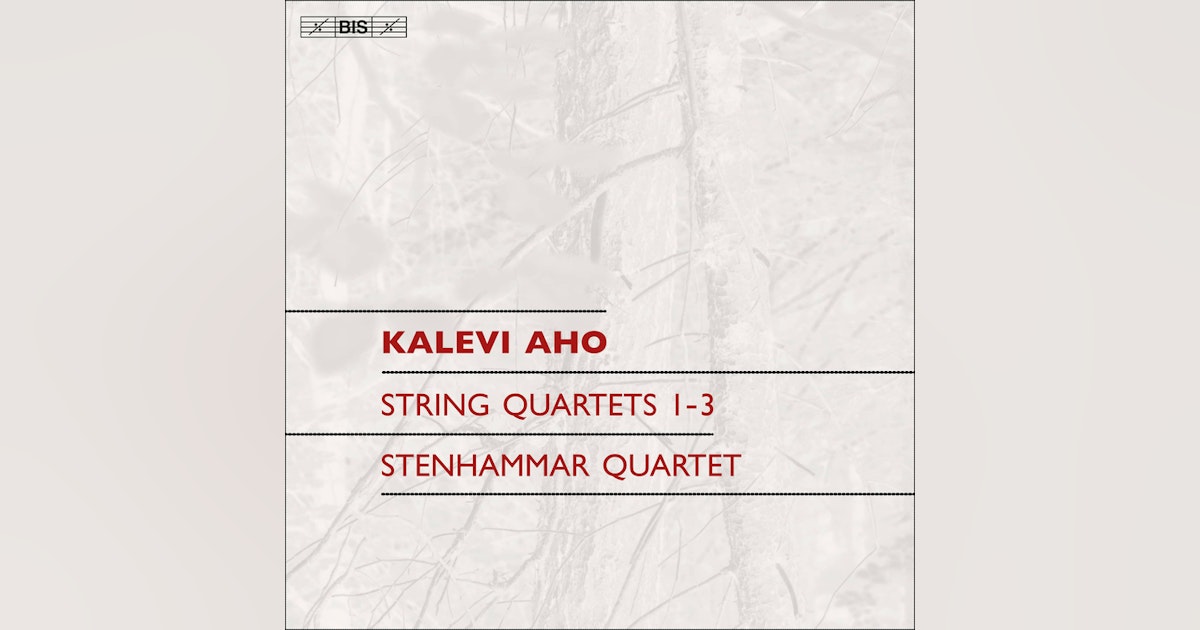Kalevi Aho: String Quartets from BIS
A superb disc: fine performances of stimulating fare

It seems amazing to me that I have not yet featured any music by the Finnish composer Kalevi Aho (born 1949). These three quartets date from 1967, 1970 and 1971; Aho's First Symphony was born from a string quartet, so the medium is or was clearly close to the composer's heart. He has also written a Quintet for Obo and String Quartet, and Quintet for Bassoon and String Quartet. Aho recently returned to the string quartet medium, writing his Quartets No.s 4 and 5 in quick succession after an extended gap.
Aho 's first string quartets date from the very beginning of his composing career, more than fifty years ago. He has, though, recently returned to it. Aho was only 18 when he completed his String Quartet No. 1 in 1967. Self-taught at the time, Aho took his inspiration from the essentially tonal music he played on the violin or heard on the radio., and uses fugue technique in each of its movements. The first performance of the quartet received excellent reviews and marked a minor breakthrough for Aho as a composer. The Third Quartet dates from the following year and marks the end of Aho’s studies with Rautavaara. In this work, Aho’s personal language begins to emerge, although the influence of Shostakovich can also be heard. The work was a great success and has been performed more often than any of his other chamber compositions. The three string quartets are performed here by the Stenhammar Quartet, one of Scandinavia’s leading string quartets, whose extensive repertoire gives prominence to contemporary music from the Nordic countries.
The Second Quartet was composed in 1970, during his second year of studies at theHelsinki's Sibelius Academy, where he was under the great Einojuhani Rautavaara. This is the first quartet heard here.
Fugue is at the heart of the Second Quartet of 1970. The opening Adagio unfolds with all of the concentration and dolorous intent of a late Shostakovich quartet. The composer writes his own booklet notes, and here's what he has to say about the first movement:
At the time I was interested in the psychological elements in the dramaturgy of compositions, and in this work the opening Adagio freezes halfway through in a kind of ‘psychological lock’ which finally unravels and allows the music to move forward again
The Senhammar Quartet ar remarkable in tracking just that while projecting unsettled stasis in the opening moments:
There is no doubting the technical excellence of the Stenhammar Quartet in the Second Quartet's Presto. Its buzzing, febrile aspect reminds us that his is the composer who wrote an “Insect Symphony”:
That Presto is in fact surrounded by Adagio: this one feels warmer than the opening one, but it also feels inconclusive, as if the quartet ends on a massive question mark. All credit to BIS, then, for factoring in a lunga pausa before the next track...
String Quartet No. 3, heard next, is cast in eight short movements. Composed one yea later, in 1971, Aho asks for all eight to be performed as one continuous whole; the layout is symmetrical (Bartók liked to do this, I seem to remember). The songful first (Vivace) is magnificent: Aho describes this as “launching the work very simply and innocently”. It contrasts maximally, then, with the depth of the Andante that follows. Listen out for the icy, interruptive chords here, so memorably delivered by the Stenhammar Quartet:
More symmetry: the next Presto is one of two that enclose an Allegro non troppo. The thee power often first (the third movement) is remarkable, and there is no doubting the arrival of the macabre dance of the fugue of the fourth movement (the composer himself calls that theme “chromatic, whimsical” - see what you think!). All credit to the first violin (Pete Olofsson) for negotiation the cripplingly fast writing in the second Presto (cleverly, the fugue theme retains as part of this movement):
More symmetry: the sixth movement develops the themes of the third before the remarkable Adagio returns to the thematic material of the second. Here is the Adagio seventh movement:
Aho's masterstroke is his finale, which links back to the opening movement but is, in feel, wholly different. It is all linked into the form as a whole, as Aho explains:
The development of the work can thus be described as a journey from innocence at the beginning to ever greater complexity, after which a return to simplicity is no longer possible and innocence is lost forever. The form is rather like a horseshoe, the ends of which have been twisted in different directions.
So no satisfying close, but another question mark.

The first quartet (1967) is differ again, with second movement that feels like faux-Baroquerie. Aho says virtually nothing about this piece musically, but I find this fascinating as it is like anything else I have heard by this composer:
The Presto vitally does not sound as such, but its velocity soon becomes apparent - not manic, just fast. Again, there is a spring rhythmic element, here rather dance-like:
The finale is surpassing, a chorale almost in faux-Baroque style.
A superb disc: fine performances of stimulating fare.
The disc is available from Amazon here.


